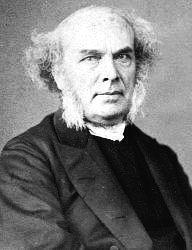"About that time [1877] hymns again begin to appear in the note-books [of Dr. Bonar], several being specially written for Mr. Sankey, the American evangelist. The story of one hymn which has become generally known may be of interest. Mr. Sankey wished to use as a solo Tennyson's sad and beautiful poem from "Guinever": "Late, late, so late, and dark the night and chill." He composed a tune for it, but copyright difficulties arose and hindered his including the words in his hymn book. So being left with a tune without words, he asked my father to write a hymn to it, keeping, if possible, to the same Scriptural theme. This was done, and "Yet there is room," was the result (p. xxv.); "Rejoice and be glad" (p. 955, i.); and "Watch, brethren, watch," were also written about the time."
This hymn is said on p. 162, i. 82, to have been published in Dr. Bonar's Song of the New Creation, 1874. This is an error. It appeared in his Hymns of the Nativity, 1879. In a copy of Mr. Sankey's Sacred Songs, &c, of thirty-one hymns, received at the British Museum, May 7, 1874, this hymn is the last.
Yet there is room! The Lamb's bright hall of song. H. Bonar. [Parable of the Marriage Supper.] This most appropriate hymn for Home Missions appeared in 1873. It has been somewhat widely adopted, and is given in the collections of Snepp, Sankey, Thring, and others, and is worthy of this attention.
--John Julian, Dictionary of Hymnology (1907)
================
Yet there is room, p. 1299, i. The Rev. H. N. Bonar in his Hymns by Horatius Bonar, Selected and Arranged by his son, H. N. Bonar, says, p. xxv.:—
"About that time [1877] hymns again begin to appear in the note-books [of Dr. Bonar], several being specially written for Mr. Sankey, the American evangelist. The story of one hymn which has become generally known may be of interest. Mr. Sankey wished to use as a solo Tennyson's sad and beautiful poem from "Guinever": "Late, late, so late, and dark the night and chill." He composed a tune for it, but copyright difficulties arose and hindered his including the words in his hymn book. So being left with a tune without words, he asked my father to write a hymn to it, keeping, if possible, to the same Scriptural theme. This was done, and "Yet there is room," was the result (p. xxv.); "Rejoice and be glad" (p. 955, i.); and "Watch, brethren, watch," were also written about the time."
This hymn is said on p. 162, i. 82, to have been published in Dr. Bonar's Song of the New Creation, 1874. This is an error. It appeared in his Hymns of the Nativity, 1879. In a copy of Mr. Sankey's Sacred Songs, &c, of thirty-one hymns, received at the British Museum, May 7, 1874, this hymn is the last.
--John Julian, Dictionary of Hymnology, New Supplement (1907)


 My Starred Hymns
My Starred Hymns



